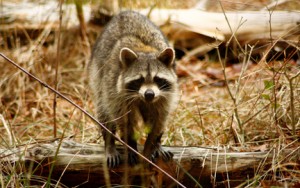post
Hibernation vs Brumation: To Sleep or not To Sleep
 On Kiawah we can feel spring is in the air; however, much of the northern United States is still feeling the full force of winter. We humans have the benefit of staying inside a warm building or adding layers of clothing to combat the unusually cold weather. Having the luxury of altering our environment allows us to be comfortable and continue to be productive animals. All other species do not have the ability to change their environment during relative extreme fluctuations in environmental temperature. This begs the question, to “sleep” or not to “sleep” – hibernation vs brumation?
On Kiawah we can feel spring is in the air; however, much of the northern United States is still feeling the full force of winter. We humans have the benefit of staying inside a warm building or adding layers of clothing to combat the unusually cold weather. Having the luxury of altering our environment allows us to be comfortable and continue to be productive animals. All other species do not have the ability to change their environment during relative extreme fluctuations in environmental temperature. This begs the question, to “sleep” or not to “sleep” – hibernation vs brumation?
Most of us understand that mammals can enter into a stage of dormancy called hibernation when outdoor temperatures become cold. In the fall, mammals that hibernate will eat more food than usual in order to build up fat stores in their bodies. Mammals will use this fat to survive as they “sleep” through the winter months. This “sleep” is unlike the kind of temporary sleep that humans experience when at rest. Humans continue to have an active brain, and will quickly awake from sleep if, for example, a loud noise is heard. When mammals hibernate, they typically do not wake up as quickly as humans do. In fact, some mammals may appear to be deceased when hibernating because their heart rate can decrease as much as 90%; breathing slows down, and body temperature is dramatically reduced. This extreme inactivity is important to conserve the fat in order to survive through the winter months. Once they begin to awaken, it can take long periods of time for hibernators to move or even to be able to walk around.
What about reptiles and amphibians? Unlike mammals, which are endothermic (warm-blooded) organisms, reptiles and amphibians are ectothermic (cold-blooded) animals. That is, they rely on external energy sources to control body temperature and cannot elevate their temperatures independently of environmental conditions. As a result, reptilian dormancy, or brumation, is different from mammalian hibernation because the metabolic processes are different. Not unlike mammals, reptiles may begin their dormancy stage in the fall. However, they do not enter a state of “sleep” as the mammals do. They go into a state of suspended animation. That is, their metabolism slows down dramatically, and still, they do not go in to a “kind of sleep” that mammals experience during hibernation. During brumation, reptiles and amphibians may become more active as temperatures rise and their ability to move around becomes more possible. When this occurs, they will consume water, but will not eat. Some reptiles and amphibians may go through a whole winter without eating. Therefore, these animals must also build up fat stores before entering their dormancy stage in order to survive dormancy. Some researchers believe that brumation may explain why reptiles tend to have a longer lifespan than that of mammals. These long periods of inactivity reduces the so-called wear and tear on these animals. In part, brumation may also explain why reptiles and amphibians are one of the most successful Class of animals that has ever lived on the earth.
To learn more about Kiawah’s wildlife, check out our Nature Tours, follow our naturalists in the field or visit the Heron Park Nature Center